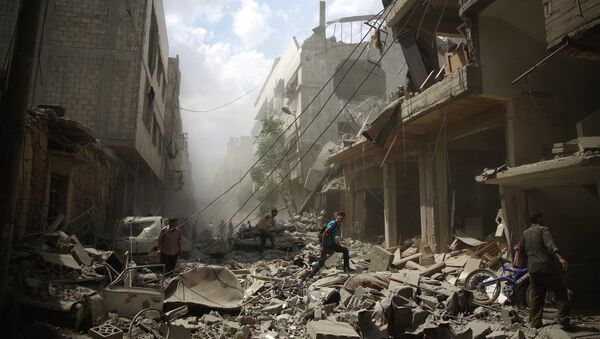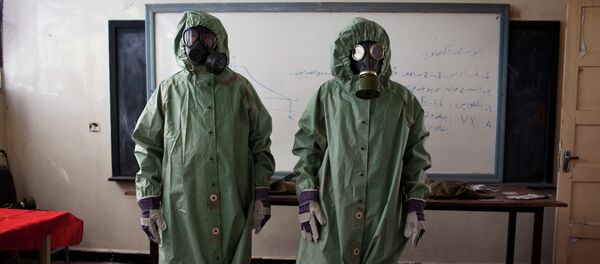The Working Group on Syria, Propaganda and Media has obtained what they say is an unpublished report by the OPCW Fact-Finding Mission on the alleged chemical attack in Syria’s Douma on 7 April 2018, indicating that the entire incident was staged.
READ MORE: Moscow Bashes OPCW Report on Alleged Douma Attack as Justification of Aggression
In the wake of the purported attack, an Engineering Assessment of two chlorine cylinders observed at the scene, a document which was allegedly excluded from the final report, was conducted in order to evaluate the possible means by which they could have been delivered at the locations.
Evidence that Douma ‘chemical attack’ was staged: OPCW’s unpublished engineers’ report:- https://t.co/PUwOL4fzmp
— Piers Robinson (@PiersRobinson1) 13 мая 2019 г.
While the final report said that engineering experts had been asked to assess the trajectory of each of the two cylinders, the newly-unveiled findings lay out competing hypotheses to determine whether the holes in the roof and the positions of the cylinders could be “accounted for by anything other than cylinders being dropped from the sky”.
READ MORE: Moscow: US Wanted to Prevent Dissemination of Objective Data on Syria's Douma
For the location of the first cylinder on a roof terrace, experts set out two hypotheses:
- the cylinder filled with liquid chlorine was dropped from an aircraft, made a hole in the roof, and the impact fractured the valve, which caused release of the chemical weapon;
- the cylinder was in the possession of the people who placed it on the terrace next to a pre-existing crater.
For the location of the second cylinder on a bed, they stated the following hypotheses:
- it was fitted with frame and fins, and was most likely dropped from a helicopter to fall into the concrete roof of the bedroom. The cylinder pierced the roof and ended up on the bed, but the valve remained intact;
- the cylinder landed on the floor of the room, and was subsequently picked up and placed on the bed by people at the scene;
- the deformed cylinder was in the possession of the people who placed it on the bed, while the hole in the roof was made either prior to or after the object was placed on the bed.
Having conducted modelling studies, experts consulted to evaluate the crater, saying that it could have occurred from a blast rather than from the impact of a falling object; similar holes were seen on the roofs of nearby buildings, the report notes.
“It was not possible to establish a set of circumstances where the post-deformation cylinder could fit through the crater with the valve still intact (whether or not an end-cap was assumed to have been fitted at the front of the cylinder), and the fins deformed in the manner observed”, experts wrote.
Engineering experts came to the conclusion that observations at the scene of both locations suggest that the chances are high that both cylinders were manually placed rather than being dropped from aircraft.
“The dimensions, characteristics and appearance of the cylinders, and the surrounding scene of the incidents, were inconsistent with what would have been expected in the case of either cylinder being delivered from an aircraft. In each case the alternative hypothesis produced the only plausible explanation for observations at the scene”.
In March, the Organisation for the Prohibition of Chemical Weapons (OPCW) released a report by its fact-finding mission on the results of the investigation into the Douma incident that claimed that a toxic chemical, most likely chlorine, was used in the alleged attack.
READ MORE: Damascus Accuses OPCW of Distorting Facts in Report on Douma Chemical Attack
Last year, a number of Syrian opposition media outlets reported, citing militant sources, that Syrian government forces had launched a chemical attack on Douma, while the Jaysh al-Islam terrorist group claimed that the army had dropped a chemical bomb on the city.
Responding to the claims, Damascus argued that such allegations were being made by terrorists to halt the advance of Syrian forces and insisted that it did not need such measures to fight militants.
The alleged attack prompted France, the US and the UK, all of whom blamed Damascus for using toxic substances against civilians, to fire over 100 missiles on what they described as the Syrian government’s chemical weapons sites.
Weeks prior to the purported incident, both Syria and Russia repeatedly warned of the upcoming false flag chemical attacks on Douma, saying that such disinformation campaigns were aimed at covering up terrorists and justifying military action.



